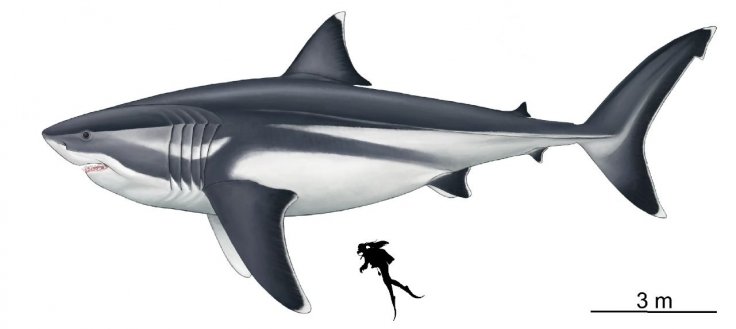Megalodon, the giant prehistoric shark that stalked the oceans millions of years ago, has fascinated scientists for years. And thanks to Hollywood, even a layman is enamored by the gigantic beast that makes modern-day sharks look like hatchling in comparison. Alas, all the knowledge about its size is nothing more than estimates. However, in a new study, scientists have managed to finally reveal how monstrous the razor-teethed marvel really was.
The study led by researchers from Swansea University and the University of Bristol, employed a number of mathematical methods to ascertain the exact size and proportions of Megalodon and analyzed five living shark relatives to arrive at an accurate measurement — nearly three times the size of a Great White Shark.

A Prehistoric Giant
Otodus megalodon is said to have lived from 23 to around three million years ago and is believed to have been double the length of a Great White shark, along with a bite force of over ten tonnes. Great White, which is one of the largest living species of sharks, is over six meters (20 feet) in length and packs a bite force of two tonnes.
Unfortunately, all that we have known so far about the size of Megalodon is based on estimates arrived upon by studying the only available fossils of the creature — its huge triangular cutting teeth that are larger than a human hand. Jack Cooper, co-author of the study, said in a statement that study of the whole animal is difficult considering that all they have are many isolated teeth.

In order to arrive at a definitive size of the ancient predator, then scientists chose a mathematical method that took the comparisons of living relatives with physiological and ecological similarities to Megalodon into consideration.
Seizing Up A Monster
Dr. Catalina Pimiento, co-author of the study explained: "Megalodon is not a direct ancestor of the Great White but is equally related to other macropredatory sharks such as the Makos, Salmon shark and Porbeagle shark, as well as the Great white. We pooled detailed measurements of all five to make predictions about Megalodon."
The authors had to be certain about the changing proportions of the modern sharks as they grew up before making projections about Megalodon. So they scrutinized their growth from their infancy to their adulthood.
"But we were surprised, and relieved, to discover that in fact that the babies of all these modern predatory sharks start out as little adults, and they don't change in proportion as they get larger," said Pimiento.
So How Large Was Megalodon?
The next step for the authors was to use the data gathered from the five species of sharks to project the size of the mighty Megalodon. Illustrating the process, Dr.Cooper said, "We could simply take the growth curves of the five modern forms and project the overall shape as they get larger and larger – right up to a body length of 16 meters."

So the million-dollar question is, how large was the Otodus megalodon? According to results, it is suggested that a 16-meter-long Otodus megalodon probably had a head that was 4.65 meters long, a dorsal fin that was approximately 1.62 meters tall, and a tail that was nearly around 3.85 meters high. Therefore, if an adult human being stood on the back of this gargantuan shark, they would be roughly as tall as its dorsal fin.









